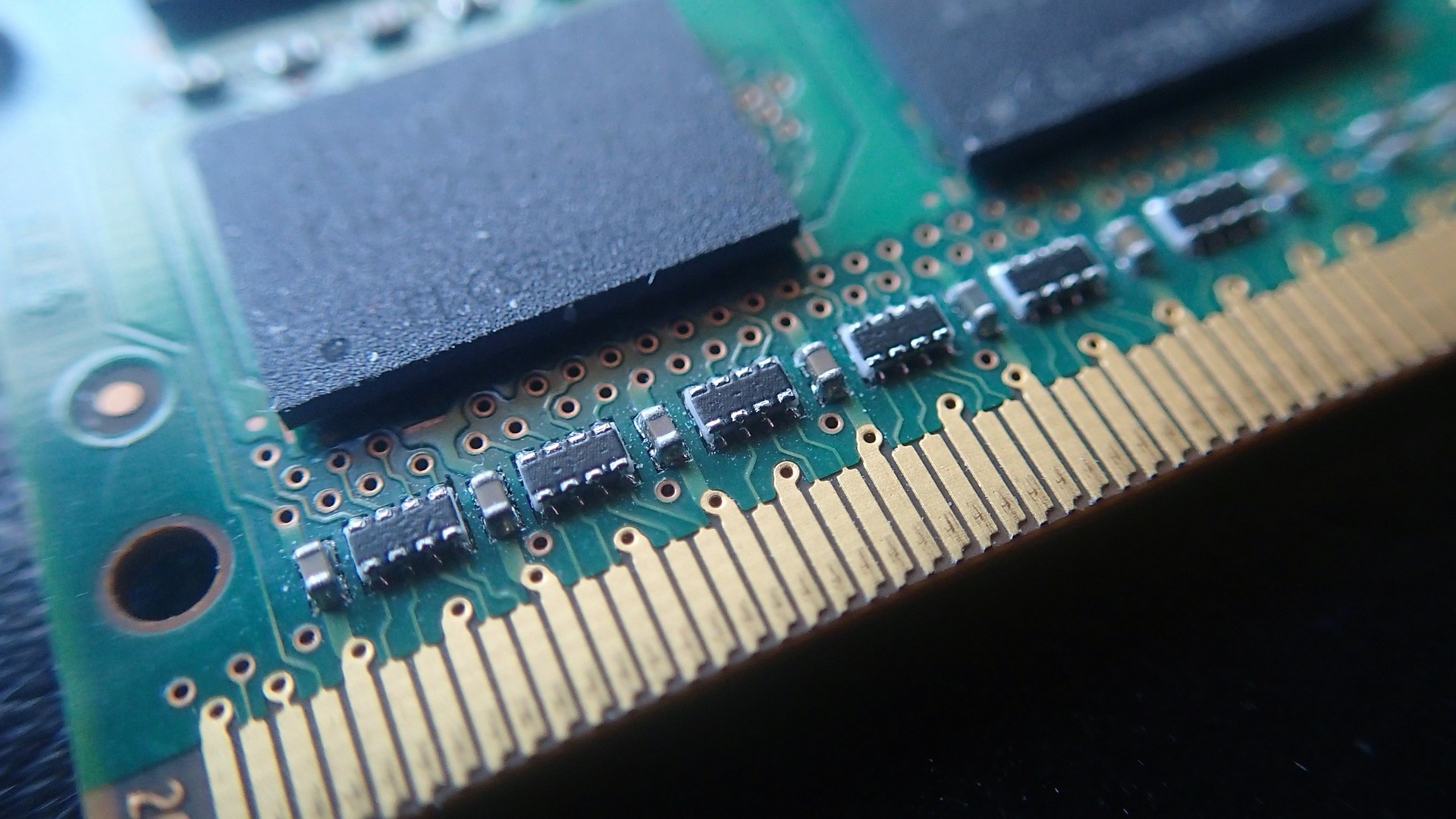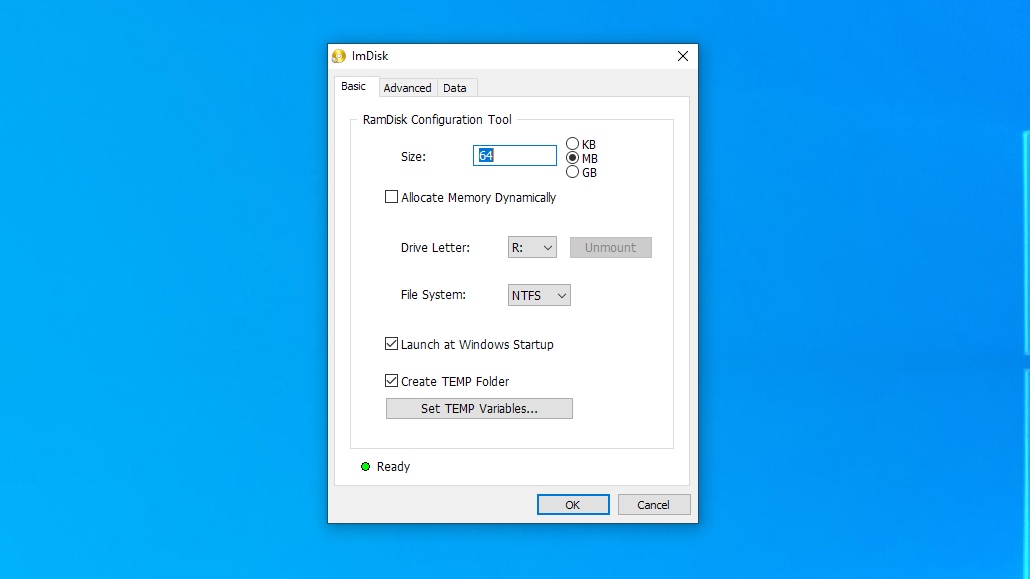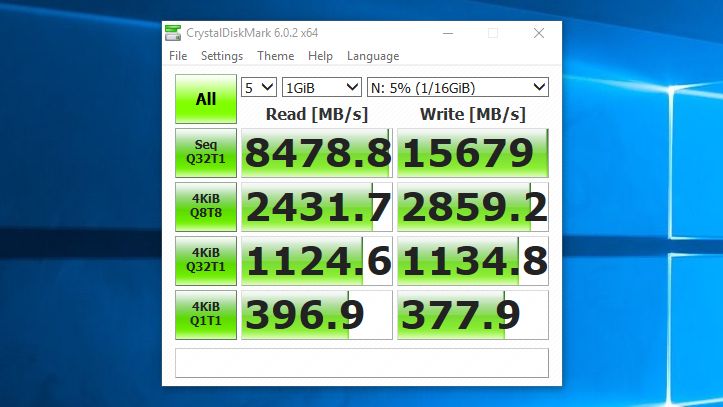Boost your PC storage performance by 30x with this free trick
Speedier than the fastest SSD on the market: meet the RAM Disk

When it comes to storage, random access memory (RAM) remains the best - in terms of speed - that money can buy, at least until someone comes up with user-installed HBM (high bandwidth memory).
However, using widely-available free, open source software (ImDisk), system memory (or simply computer memory as it is often called) can be converted into usable storage known as a RAM Disk, essentially turning some of your PC's RAM into a super-fast storage drive.

What is a RAM disk?
What the software does is ring-fence a block of memory (as defined by the user) which is then used as a virtual hard drive and can be mounted and recognised under Windows. You can (and should) configure them as a RAID-0 array, and you can spawn and destroy them within minutes.
A couple of points to note though; firstly, use applications that do not usually use memory for caching. Also, bear in mind that RAM disks are not persistent; once your computer is switched off (which is different from sleeping or hibernating), the content of the computer's memory is erased. But since computers nowadays usually opt for the later two, the content can be stored for longer.
- These are the best SSD deals
- Don’t forget to safeguard your data with the best backup software

Ultimate privacy
Because of this unique property, memory can be viewed as the ultimate guardian of someone’s privacy as you cannot undelete or recover data that has been wiped. In fact, one vendor touts the privacy benefits of RAM disks as a virtual storage device.
Dataram claims that your memory will zero fill on stop or shutdown instantly, clearing RAM contents for complete unrecoverable data sanitizing, unlike hard disks or web browser "safe modes", thereby enhancing internet privacy, security and malware protection.
One popular VPN provider, ExpressVPN, went as far as running an entire VPN server in memory. The TrustedServer initiative, as it is known, is different from traditional containerization on bare metal servers as there’s no host OS to speak off. The stack integrates the host OS and is loaded every time the server is switched on.
Are you a pro? Subscribe to our newsletter
Sign up to the TechRadar Pro newsletter to get all the top news, opinion, features and guidance your business needs to succeed!

Super fast speeds
Of course, the reason why you'd want to use a RAM disk is because it is fast – absurdly fast. Starting with as little as 4GB of memory, you can install frequently-accessed applications (check our list of portable software) that will benefit from phenomenally high read and write speeds, which in theory would mean faster load times and far snappier performance.
A SATA SSD will reach about 500MBps in read/write speeds. We created a RAM disk array on the Eurocom Tornado F7W mobile workstation (it comes with 128GB of RAM) and we hit read/write speeds of up to 8.7/15.8GBps, that’s a speed improvement of up to 30 times (at least according to CrystalDiskMark)!
Could we have gone even further? Perhaps. by putting multiple RAM disks in a RAID array? Sadly no. There is an upper limit to the memory’s bandwidth, plus there is some overhead in RAID-0 processing – as it's done in-software within the operating system.
As a spokesperson for Softperfect, another popular RAM disk software developer puts it, the best and fastest way is to use a regular RAM disk without Hard Disk Emulation and with an exFAT file system. In our test though, we saw no real difference between exFAT and NTFS.
Unlike most upgrades, a RAM disk is technically free; you just decide on allocating your computer’s resources differently. Older computers are more likely to benefit from it, especially those with a hard disk drive and plenty of memory like old servers or workstations.
Running Windows entirely in RAM?
To our knowledge, there’s only one piece of software that will allow you to clone your Windows installation, use it and destroy it after use. And that’s HyperOS 2016 whose tagline is “One Windows is not enough”. Intriguingly, it – as well as a number of other vendors like Adata and Gigabyte – used to sell physical RAM disk drives as well, which had a battery and memory slots.
You could fill that with cheap memory and use it as a traditional hard disk drive. One of the issues you would run into, though, would be that you would need to plug it into a slot that is bandwidth-constrained, negating any performance gains. However, SSD technology came along and changed the game.
So, while it may be possible to run Windows entirely in memory for ultimate performance, some hardware issues will have to be ironed out beforehand.
Should you get your own RAM Disk?
Like super cars, RAM disks suffer from diminishing returns as they will be hampered by other bottlenecks around the system. Yes, they are fast – but only as fast as your system will allow them to be, and you will need to be very much aware of the limitations of such a storage system.
Not all software will work with it, and since your OS will still reside on a slower storage subsystem, the potential for much better performance is lost. Still, with RAM prices almost at an all time low (32GB for $102 at Newegg), now could well be the time for some serious experimentation to fuel your need for speed.
- We've also highlighted the best cloud storage

Désiré has been musing and writing about technology during a career spanning four decades. He dabbled in website builders and web hosting when DHTML and frames were in vogue and started narrating about the impact of technology on society just before the start of the Y2K hysteria at the turn of the last millennium.